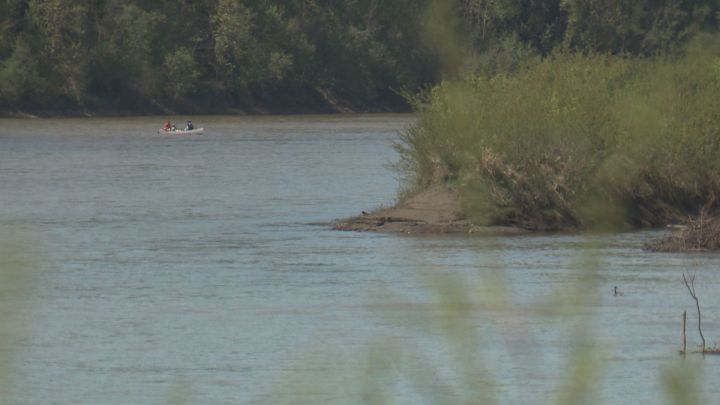Some researchers are warning there will be changes in how the North Saskatchewan River is used in years to come.

Glaciers that feed rivers running through the Prairies are slowly melting away. Recently, that caught the attention of Calgary City Council, which heard recently that city might hit its limit for its water intake licence from the Bow River by 2036.
The North Saskatchewan is bigger and has fewer agricultural operations that depend on it, but David Sauchyn, a researcher at the Prairie Adaptation Research Collaborative, says its flow is also declining.
Watch below: Some Global News videos about the North Saskatchewan River.
It’s just hard to tell because the climate in Western Canada is already like a roller-coaster, he says.
“On the Canadian Prairies, in the Rocky Mountains, we have one of the most variable climates on the entire Earth, so you pretty much have to be a statistician or a scientist to pick out that slow decline in the average, because we flip back and forth between wet years and dry years, and wet decades and dry decades.”
Sauchyn’s group is working with companies like EPCOR that will have to deal with potential droughts in the future, which may get worse as the river level continues to decline.
“In recent years, the water levels have been average or above average in the river, but it seems like we’re now moving into one of these dryer phases,” Sauchyn explained.
“We’ve had a couple of dry summers and the snowpack in the mountains has been described as average, or below average.”
The main problem, if a dry spell is approaching, is that Edmonton and other municipalities along the river rely so heavily on it for their water supply. It’s not unprecedented for it to drop dramatically.
“In the 1790s at Fort Edmonton, they couldn’t move their furs because, in the words of the Hudson Bay Company, there was no water in the river,” Sauchyn said. “So there wasn’t enough water in the North Saskatchewan to float a canoe, and they had to stockpile the furs.”
While climate change is slowly reducing the amount of water in the river, development is also a concern, according to Chris Smith, a parks co-ordinator with the Canadian Parks and Wilderness Society. He says he is worried about the UCP government’s plan to pull back on a proposed plan meant to improve environmental protections for the Bighorn region, which is where the North Saskatchewan comes from. That could lead to increased river flow when it’s not needed, and decreased flow when it is.
“If we heavily develop that area, it really does reduce the capacity of that land base to hold onto that water like a sponge and release it over time,” Smith said.
READ MORE: Bighorn Country parks proposal will not go ahead: Alberta environment minister
Watch below: Some Global News videos about Alberta’s Bighorn Country.
Smith added that it’s difficult to measure the amount of water that is being pulled from the river, since of those licences given out, only eight out of 34 municipal licence-holders, 10 out of 156 irrigation licence-holders and about a third of commercial licence-holders report how much they withdraw. From what he can tell though, Smith said utilization of the river is not excessively high.
Still, as the level drops over time, and if the area sees lots of development, usage will become an issue, he said.
According to Smith, one of the best ways to mitigate any future water concerns is to try and maintain the forests and land bases around the North Saskatchewan as much as possible.


































Comments